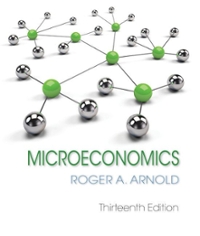Question
GULF TIMES Qatar's economy will weather Covid-19 storm, says expert Qatar continues to maintain a healthy economic position amid the ongoing novel coronavirus (Covid-19) pandemic,
GULF TIMES
Qatar's economy will weather Covid-19 storm, says expert
Qatar continues to maintain a healthy economic position amid the ongoing novel coronavirus (Covid-19) pandemic, allowing it to overcome the challenges wrought by the health crisis, a member of the academia has said.
"Even casual observers of macroeconomic data will be aware that Qatar's economic position vis--vis that of many other natural resource exporting countries is, relatively, healthy. This health is structured on prudent macro management, long before the Covid-19 pandemic, such that budget surpluses built on LNG exports had been reinvested sagaciously," said Dr Greg Bremner, an economics lecturer at AFG College with the University of Aberdeen in Doha.
"Indeed, far from being inflicted with the eponymous natural resource curse that afflicts many natural resource-abundant countries, Qatar has managed its natural resource wealth in such a way that it continues to be a blessing rather than a curse," continued Bremner.
Despite by the recent collapse in the oil price, Bremner noted that Qatar stands behind its economy to the tune of, "roughly 10%" of its national income maintaining, among other things, workers' salaries and healthcare.
As the pandemic infects demand for natural resources forcing global manufacturing into stasis, Bremner pointed out that natural resource exporters worry about their individual breakeven costs of production "and the fact that market prices don't cover those costs."
The more reliant any country is on its resource exports in terms of those export's share of GDP, the more acute the pressure on the gap between their breakeven price and the market-driven selling price, Bremner explained.
A common hazard is that, while production costs are within the exporters' control, the price is set by international demand. Covid-19 has neutered that demand, Bremner stressed.
"Much will depend, not on Qatar's ability to fulfil its international trading obligations in respect of LNG; of that there is no doubt, but on the success or otherwise of attempts made by its counter-party governments to reignite their own demand.
"This will be a complicated process. Economists ponder the 'shape' of economic recovery; 'V-shaped' or 'U-shaped', perhaps more resembling a 'W' shape or, as is more likely, the shape of the 'square-root' sign," Bremner further explained.
He said the shape taken by economic recovery is important for Qatari exports because, in aggregate, "roughly 40%" of them is evenly distributed between Japan and South Korea Qatar's biggest customers.
Japan's support package is worth "$1.09tn," South Korea's worth "$190bn" as both countries attempt to stand behind their economies with a view to reigniting aggregate demand as soon as possible, said Bremner.
"Crucially, and despite the magnitude of the financial underpinning underway in Japan and South Korea, the shape of their recoveries will differ from each other, generating demand-side imbalances to which Qatar's export pattern will have to adjust.
"In the long run, the enormity of the pandemic might bequeath a change in economic thought and method in the way that the 1930s depression introduced Keynesian economics and its focus on aggregate demand," Bremner said.
He added: "Meantime, Qatar has considerable expertise in weathering storms; it continues to blossom under the weight of an economic blockade, successfully absorbed the shock from the 2014-2016 drop in hydrocarbon prices. Its strong balance sheet provides sufficient financial muscle to weather the Covid-19 storm. The question for Qatar is; will its customers weather the storm in similar fashion?"
Questions:
1.Read the attached article and answer the following question:
Use the AD and AS macroeconomic equilibrium model to show, graphically, the short run and long run impact of the economic recession in Japan and South Korea, due to COVID-19 pandemic, on the macroeconomic equilibrium in the Qatari's economy. Assume that Qatar's economy was initially operating at the potential level of GDP before the pandemic and there is no government or central bank intervention. Briefly explain. (2.5 marks)
2.On December 13, 2017, the US Central Bank Chairman, Prof. Jeanette Yellen, announced an increase in the interest rate. Use the money market model to show, graphically, how the US central Bank could achieve this target. Make sure you show the old and new equilibrium interest rates. Briefly explain. (2.5 marks)
Step by Step Solution
There are 3 Steps involved in it
Step: 1

Get Instant Access to Expert-Tailored Solutions
See step-by-step solutions with expert insights and AI powered tools for academic success
Step: 2

Step: 3

Ace Your Homework with AI
Get the answers you need in no time with our AI-driven, step-by-step assistance
Get Started


